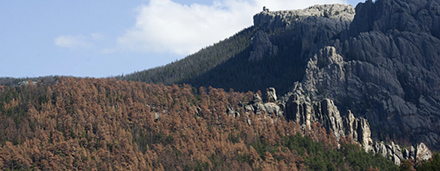Despite challenges posed by the pandemic, the USDA Forest Service announced it surpassed goals and set records in 2020. Source: Timberbiz
“2020 was a challenging year, with record wildland fire activity and the COVID-19 pandemic. Throughout the Forest Service, we have risen above these challenges and set our minds, hands and hearts to carrying out our mission to meet the needs of the communities we serve,” said Forest Service Chief Vicki Christiansen.
The Forest Service relied on its strong science, innovation and partnerships to overcome this year’s challenges as the agency found new solutions to serve the public during a time of unprecedented need.
In 2020, the Forest Service provided jobs and stability for local economies through a year of historic timber production, selling more than 3.2 billion board feet of timber, the second highest level in 20 years.
The agency also improved forest conditions and reduced wildfire risk on over 2.65 million acres, removing hazardous fuels like dead and downed trees, and combating disease, insect and invasive species infestations.
The Forest Service undertook a suite of regulatory reforms to meet the goals of the Secretarial Memorandum to the Chief of the Forest Service to modernize and align agency directives with new legislative authorities and reduce regulatory burdens.
By the end of December 2020, the Forest Service will have nearly completed all guidance to implement new legislative authorities in the 2018 Farm Bill. In addition, Forest officials quickly began implementing the Great American Outdoors Act to increase access to national forests and grasslands and make progress towards reducing the agency’s $5 billion infrastructure backlog.
The Forest Service was successful in prioritizing early suppression of wildfire ignitions while facing a record-breaking fire year, with the most acres burned on national forests since 1910.
The agency’s modelling research on how COVID-19 may spread between firefighters or in communities during response efforts led to new interagency safety protocols to better support fire camp management. The protocols not only successfully minimized the spread of COVID-19 among the agency’s 10,000 firefighters, but early learning suggests the safety measures resulted in additional health benefits to fire crews, reducing ailments common in fire camps, which translated to a healthier and more resilient firefighting workforce available to protect lives, homes, and communities threatened by wildfire.
The Forest Service made significant strides toward Shared Stewardship this year, working more closely than ever with Tribes, States, and local partners to make sure the right work happens in the right place at the right time. So far, 44 states and territories are now involved in a Stewardship Agreement.
The agreements allow the Forest Service to employ the latest tools and share decision making on the highest priorities to improve forest conditions across broad landscapes. These new agreements have resulted in increasing resiliency of forests, protection of communities and reduction of wildfire risks. They have also produced jobs and stabilized economies.
This year, Americans sought out their public lands in tremendous numbers, finding relief in the Great Outdoors, showing once again how public lands unite the nation. In response, the Forest Service generated solutions to ensure visitors had every opportunity to safely use and enjoy their national forests and grasslands during the pandemic.
The Forest Service welcomed record-breaking numbers of visitors, many of whom were first time users, with 95% expressing satisfaction with their experiences.








